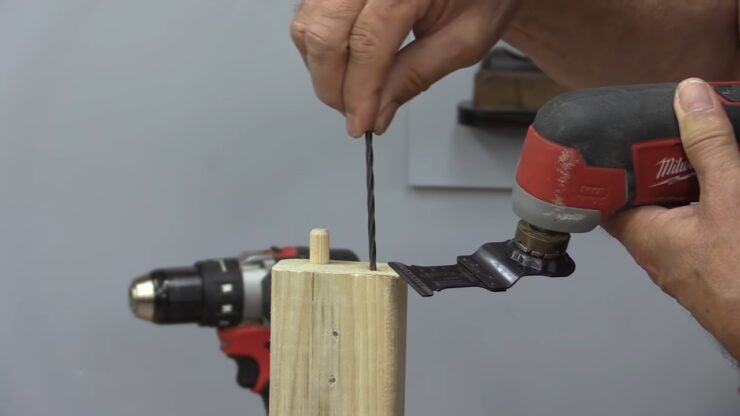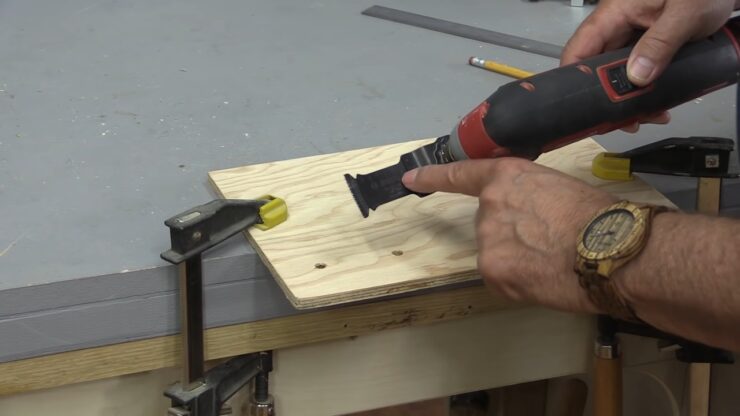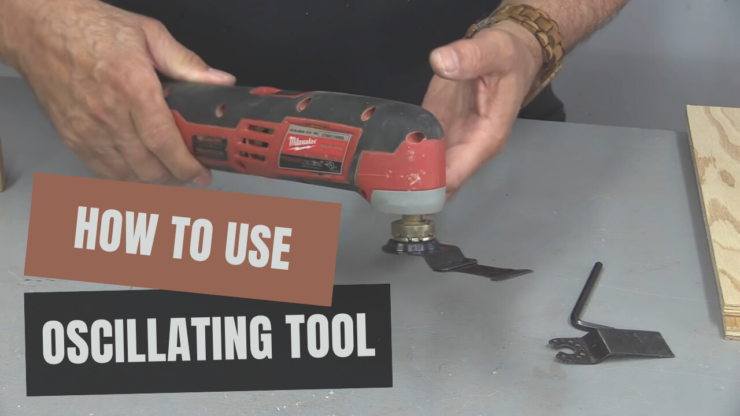Do you have some woodworking skills but don’t have a lot of tooling? No problem! Oscillating tools can help take the guesswork out of your next DIY project.
In this article, we will show you how to use an oscillating tool for a variety of tasks, from cutting plywood to routing rabbets. By understanding the basics of how these tools work and how to use them, you’ll be able to complete your projects with ease.
What is an oscillating tool?
An oscillating tool is a powerful tool that uses an oscillating motion to sever materials. Oscillating tools are popular for cutting through materials such as metal, plastic, and wood. They have a number of benefits over traditional hand tools, including greater accuracy and speed.
This is a great tool to have in your arsenal, especially if you are new to DIYing.
How to use it?
If you want to start using an oscillating tool, the first thing you need to do is find one that’s right for your project. There are a few different types of oscillating tools on the market, so it can be hard to decide which one is best for your needs.
Some oscillating tools use a motor to move the blade around, while others use a hand crank. The motor-driven tools tend to be faster and more powerful, but they can also be harder to control. If you’re just starting out, I recommend going with a hand-cranked tool. It’s slower and easier to control, and it’ll let you learn the basics of using an oscillating tool before investing in a motorized model.
Once you’ve selected your model, there are some basic things you’ll need to know in order to get started using it. You’ll first need to determine the correct speed for your project. This will depend on how thick or thin the material is and how fast you want the blade to move.
Once you’ve determined the speed, you can start cutting by holding down the trigger (or handle) and moving the tool back and forth across the material.
To finish off a cut, simply release the trigger (or handle) and watch as the blade cuts through the material. Oscillating tools are great for cutting wide materials like boards or sheets of plywood, but remember that they’re not as effective on delicate materials.
Types of Oscillating Tools
There are a few types of oscillating tools that can be used in woodworking. These tools include belt sanders, orbital sanders, variable-speed drills/drivers, and power saws. Each of these tools has its own unique features that can make them the perfect choice for specific tasks.
Don’t miss out on our article on the best palm router for woodworking.
Belt sanders are often used for general surface cleanup tasks, such as removing old finishes or residue from wood. They typically come with a variety of grits and sizes of sandpaper to cover a wide range of grit levels. They are compact and easy to use, making them ideal for smaller areas or detailed work.
Orbital sanders are similar in design to belt sanders but typically have larger abrasive discs that rotate around an axis. This allows the user to handle larger areas with more accuracy and control. They typically have multiple speed settings and come with a variety of attachments (such as a dust collector) to customize the tool’s use.
Variable-speed drills/drivers offer increased flexibility when it comes to drilling and driving screws into wood. They typically have multiple speed settings and an on/off switch for convenience. Variable-speed drills/drivers also come with a variety of accessories (such as jigs) to make drilling more precise and easier.
The best uses for an oscillating tool

There are many different uses for an oscillating tool, and they can be applied to a variety of DIY projects. Here are some tips:
Use an oscillating tool to smooth out a surface before painting or staining it. By using the tool’s vibration, you can help the surface to conform to the desired shape more easily.
You can also use it to remove wood screws or nails from tight spaces. The tool’s vibration will help dislodge the screws or nails without damaging surrounding surfaces.
Try using the tool to create detailed patterns in plastic clay or silicone molds. Patterns created this way will be more durable than those created by hand and they will remain intact after being removed from the mold.
Benefits of using an oscillating tool
The benefits of using an oscillating tool include increased accuracy, reduced downtime, and improved workpiece quality. Accuracy is achieved by moving the tool at a consistent speed, which prevents contact between the tool and the workpiece.
Reduced downtime is due to the fact that a lesser number of passes are necessary to achieve the same results as with a non-oscillating tool. Workpiece quality can be improved by ensuring that the tool is properly calibrated and maintained.
What to look for in an oscillating tool

When shopping for an oscillating tool, there are a few things to look for. These include the size and shape of the tool, the type of oscillation it offers, and how easy it is to use.
The size and shape of the tool will determine how easily it can be held in one hand. Many oscillating tools offer both horizontal and vertical oscillations, which can be useful for various tasks.
The type of oscillation offered will determine what kind of work can be done with the tool. Common types of oscillations include rotary and linear. Rotary oscillators spin around a central axis while linear oscillators move back and forth along a line.
How easy it is to use is another important factor to consider when shopping for an oscillating tool. Many have multiple settings that allow for more specific uses of the tool.
Be sure to read our article on how to dry wood fast for woodworking.
Conclusion
If you’re itching to get your hands on a tool that can help with a variety of DIY projects, consider investing in an oscillating tool. Oscillating tools are versatile and can be used for a wide variety of tasks, from removing dried paint to smoothing out nicks in the wood.
We hope that our guide has helped you choose the right tool for your next project and that you enjoy using it as much as we do!

